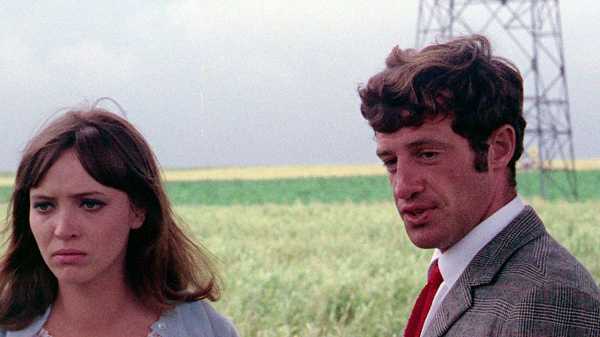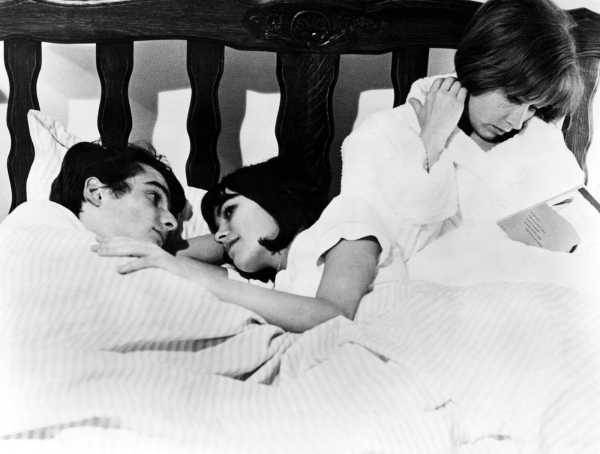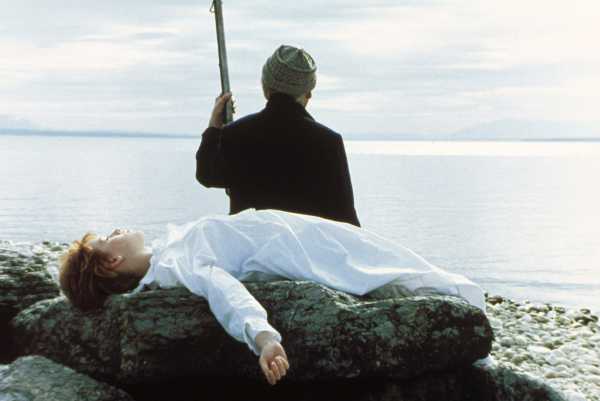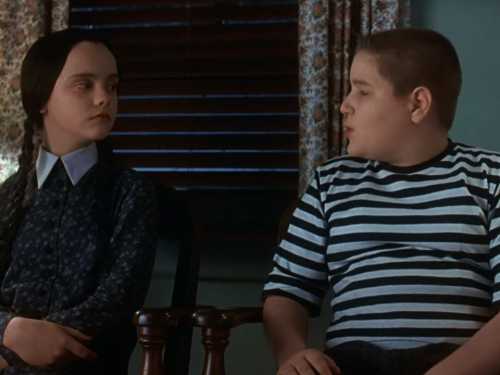
It would be a fool’s errand to try to list the best films by Jean-Luc Godard, who died, at the age of ninety-one, earlier this week. Godard himself was an enthusiastic list-maker when he was a working critic, and, to the very end, he was a formidable flinger of value judgments, even regarding the greats of cinema. But the occasion for such a list is wrong. Mere days after his passing, it’s not the moment for arm’s-length evaluations but for candid emotion, which impels me to share something like my favorites of his films, refracted through the touchstone of experience. These are the films of Godard’s that have, in some sense, taken me over—the ones that most often come to my mind, on their own. As a prodigious nineteen-year-old critic, Godard asserted, “At the cinema, we do not think, we are thought.” In the majestic video series of his later years, “Histoire(s) du Cinéma,” his submission to the power of cinema is rendered as a transfiguring passion, in the religious sense. The movies I’m recommending to stream are the ones of Godard’s that have thought me most deeply; I haven’t picked them, they picked me.
This list should have been longer. But the movies of Godard’s that most strongly imprinted themselves on my limbic system are not all available to stream. The one that I miss most is “In Praise of Love,” from 2001, which I saw ten times the week it opened, in Paris, and not out of any sense of duty, but, rather, of compulsion. It’s one of the great cinematic love stories, which takes place amid the exploration of political history and film history, involving the Second World War and the Holocaust and the current-day politics of poverty and inequality, and it gives rise to some of Godard’s most original dramaturgy and most rapturous images. It also is his most advanced and accomplished work with actors and represents something like his own ideal of cinematic performance. The critical failure of this movie, which should have propelled Godard back into the limelight and to the forefront of modern filmmaking, is a lasting stain on the profession.
What’s also missing is Godard’s video series “Histoire(s) du Cinéma,” made between 1989 and 1999. Here, the analytical, laboratory-like work that he did with Jean-Pierre Gorin in the late sixties and early seventies came to fruition: an approach to archival clips that set the definitive standard for visual analysis and intellectual autobiography by way of aesthetic intervention. And there’s “Keep Your Right Up” (1987), a comedy, starring Godard, about filmmaking, politics, and death, that features the only scene, in any movie I’ve seen anywhere by anyone, that inevitably brings tears to my eyes whenever I watch it. It’s a scene involving André Malraux’s diary entry, describing how he wrote about a suicide in his novel “Man’s Fate.” In the light of Godard’s death, by assisted suicide, it’s all the more mournful.
There’s much else that I don’t mention here. Writing about a Godard retrospective in 2013, I recommended “Hail Mary,” Godard’s modern version of the relationship between Mary (who works in a gas station) and Joseph (who drives a taxi), which gave rise to widespread protests, calls for bans, and even violence, on the ground of its ostensible blasphemy. I also enthused about “Every Man for Himself,” an innovative, quasi-autobiographical view of a filmmaking couple in Switzerland that’s imbued with the spirit of a generation of young actors (Isabelle Huppert, Nathalie Baye, and Jacques Dutronc) along with the extraordinary presence of Marguerite Duras. I wrote the booklet essay for the Criterion release of “Pierrot le fou,” starring Anna Karina (who had been married to Godard) and Jean-Paul Belmondo (who shot to stardom in Godard’s “Breathless”), in which Godard adapts a pulp-fiction novel into a fractured film noir in color about cinematic ambition and ecstatic romance, political violence and intimate betrayal, commercial culture and high art, love and death. And I wrote, on The New Yorker’s Web site, about “Le Petit Soldat,” Godard’s second feature, starring Karina and Michel Subor, a romantic thriller centered on espionage and the practice of torture during France’s Algerian War, which was banned outright by the French government for three years.
“Breathless,” which changed my life (definitively, and for the better) when I was seventeen, doesn’t need my recommendation. Neither does “Contempt,” which comes as close as possible to transferring Godard’s artistry to the high-budget reaches of Hollywood (with Brigitte Bardot and Jack Palance under the influence of his direction). Nor does my list below include other great and celebrated films of Godard’s, particularly those from his flourishing years of celebrity, in the nineteen-sixties. Of course I “recommend” them (“Vivre Sa Vie,” “2 or 3 Things I Know About Her,” “La Chinoise,” “Weekend,” and many more); there’s no right place to begin and no best point of entry. But the prime discovery in my lifelong obsession with Godard’s films is that they got better—his sense of composition grew more complex, his use of movie technology became more sophisticated, his self-awareness regarding the history of cinema and his own place in it grew more acute. As thrilling and tapped-into-the-times as his films of the sixties were, his films of the eighties and beyond achieve what he only hinted at earlier: the connection of his work to the high art and the classical culture in which he was raised.
“A Married Woman”
One of Godard’s crucial achievements in the sixties was to unite the heights of high culture with the mass-media milieu of Hollywood movies, and in “A Married Woman,” from 1964, he extends that achievement into a third dimension. Godard was obsessed with Beethoven’s string quartets, and here he unifies Beethoven and genre cinema with the alluring and mind-bending dazzle of modern media, the stark graphics and hectic rhetoric of advertising, in the interest of a subtle reinvention of the very nature of cinematic realism.
The story, set in Paris, is a classic triangle: a woman, her husband, Pierre, and her lover. Yet the story isn’t exactly that of real-life people. Despite the recognizable settings, the location shooting, and the extensive anchoring of the action in the current events and pop culture of the moment, the movie is a sociological X-ray—a corporeal set of abstractions that turns its characters inside out to dramatize the ambience and the effect of the media culture that informs and even forms them. The film is both an effervescent collection of blithe, bouncy, ad-and-fashion-centric pop culture and a derisive condemnation of it. Godard adds the Beethoven and other elements of high art to stand outside his protagonists’ media immersion and subject it to a stringent and rueful moral analysis. (Godard and Karina, his then wife, were to divorce by the end of 1964, following her affair with an actor. I didn’t know this until decades after I first saw the movie, but it does clarify the hyperbolic energy behind the film’s furies.)
The movie’s visual and stylistic inventiveness is astounding. The film is implicitly sexually explicit—its sex scenes are visual metaphors, with the actors’ bodies fragmented and their gestures stylized against white or blank backgrounds. Godard features extended monologue or interview scenes with various characters, which implants the feel of documentary into the drama. This element of documentary extends to authentic documents: streetside posters and billboards, advertising brochures, magazines and newspapers; a single extended montage, set to a sentimental pop record, fills the screen jazzily with a polyphony of typefaces and illustrations, slogans and wordplay. Godard includes subtitles for remarks overheard in public: a riff on seventeenth-century drama, an excerpt from a novel by Céline, a plot-driving reading of dialogue from a play by Racine, a segment centered on the Frankfurt trial of people who served as officials in Auschwitz, and a clip from Alain Resnais’s seminal Holocaust documentary “Night and Fog.” This overwhelming media collage distills both a bitter vision of mass indoctrination and a compassionate one of freedom. Its exemplary image is of the titular married woman, rushing off from a tryst but changing taxis en route for fear of being followed by a private eye, while a Beethoven quartet on the soundtrack endows her flight with classical grandeur.

Jean-Pierre Leaud, Chantal Goya, and Marlène Jobert in “Masculine Feminine,” from 1966.Photograph from Everett
“Masculine Feminine”
When I interviewed Godard in his office in Rolle, Switzerland, in June, 2000, I told him that I considered his 1966 film “Masculine Feminine” to be a new beginning for him—a movie that owed nothing in style, tone, story, or scale to Hollywood, and that, as a result, served as a template for independent filmmaking by young filmmakers. (To my surprise, he agreed.) It’s a film of youth, which is why I saw it about thirty times from the age of eighteen to my mid-twenties (including three times in one night, when I projected it for our college film society). I first saw it about ten years after its première, yet the film’s subject matter already seemed like a relic of another time, because it came from before the great dividing line of 1968 and the political and social changes of the late sixties, which it nonetheless anticipated—even as its aesthetic seemed to point toward the future. It, too, is a romantic drama, in which Paul (Jean-Pierre Léaud), who’s about twenty, has just returned to Paris after his compulsory military service. At a café, he meets a young woman named Madeleine (Chantal Goya), and they soon become a couple. Madeleine is a pop-music singer who has just made her first records; she begins to get some publicity, even some celebrity, and her success threatens to come between them.
Paul is something of an autodidactic young intellectual, who is first seen in the bleary winter light of the café doing what young intellectuals do—he’s writing, and, as he writes, he speaks his text, autobiographical and political, aloud on the movie’s soundtrack. The movie takes place in the explicit context of practical politics: Paul and his friend Robert (Michel Debord) are actively involved in protesting the Vietnam War, and they’re not alone; one of the movie’s most powerful scenes involves a protester who sets himself on fire in opposition to the war. (The bold aesthetic of the scene rises to its grave import.) Another scene is centered on an excerpt from Amiri Baraka’s play “Dutchman,” about the response of a Black man to racism in the United States; elsewhere, Paul acknowledges and parodies the protest songs of Bob Dylan. The story takes place amid France’s 1965 Presidential campaign (the first time that France directly elected its President), and the story involves the possibility of abortion at a time when the practice was illegal in France.
The feeling of youth in the film is paradoxical. Paul, though an engaged left-wing activist, is culturally conservative, out of step and out of sorts with rock music and commercial pop culture. He loves classical music and makes fun of Madeleine’s aspirations and achievements, as well as of the media world that celebrates her. He becomes an interviewer for a polling firm, in effect a practicing sociologist, and engages in a one-person exposé of the emotional debilitation of consumerism. A night in a discothèque turns into a horror story for Paul, who is utterly out of place in his own time and generation. A performance by Madeleine in a recording studio, for all its touching intimacy before the microphone, is contrasted with Paul’s own febrile and desperate cutting of a spoken-word record in an arcade booth. The movie is suffused with an air of desperate romanticism that overlaps with the political and social violence of the era, and Godard’s stark, spare, concentrated methods have a disillusioned clarity that feels close to documentary—and like a first-person narrative of a young person’s struggle for a place in the world, and of the cinematic effort to craft it.
Before the advent of home video, publishers used to issue books of screenplays that served as handy surrogates for watching or rewatching. The one for “Masculine Feminine” had an unusual distinction: it contained translated excerpts from a French book called “Waiting for Godard,” by Michel Vianey, which was a report from the shoot of the film. Vianey, a novelist and journalist, was an extraordinary observer and describer, and the excerpts provided a glimpse of Godard and his cast and crew at work that leaped off the page as vividly as if I were watching it along with the movie. Those pages were, in effect, my first glimpse of Godard himself; when I watch “Masculine Feminine,” I see it being made, I see the artist at work.

Molly Ringwald and Burgess Meredith in Godard’s “King Lear,” from 1987.Photograph from Cannon Films / Everett
“King Lear”
What should already be clear from any discussion of Godard’s films is the proximity of the sublime and the ridiculous, the interjections and disruptions, the fragmentation and the interruption, that mark his movies as collage-like, that display the disparate parts of which the movie is made, blending tragedy and comedy with a Shakespearean bravado. When Godard turned his attention to Shakespeare, it was with a daring sense of freedom that played fast and loose with the sacred text, but also extracted from it a tragic essence that bears little trace of a mere filming of the play; rather, it renders the drama inextricably and fundamentally cinematic. That’s because Godard turned “King Lear” into the story of the making of movies—and, going himself one better, also turned it into the story of the making of this very film. Norman Mailer was supposed to write the script, and Godard wanted him and his daughter Kate to act in the movie, too. After a dispute, the Mailers left the shoot—and Godard included footage that they filmed and, on the soundtrack, he told his version of the story. The theatre director Peter Sellars plays William Shakespeare, Jr., the Fifth, who arrives in a small Swiss town, tasked—after the entire œuvre of Shakespeare has been lost in the apocalyptic catastrophe of Chernobyl—with rediscovering his ancestor’s plays. He seeks the help of an eccentric local researcher named Pluggy (played by Godard with a head of dreadlocks made of video and audio cables), and, at the hotel where Shakespeare is staying, he witnesses the conflict between an elderly mafioso, Don Learo (Burgess Meredith), and his daughter Cordelia (Molly Ringwald).
Yes, the premise is self-evidently antic and self-parodying. Part of its oddness is rooted in the assumption that Shakespeare’s play “King Lear” is a given, a readily accessible cultural object that’s awaiting performance and discussion. The movie dramatizes an idea that motivated Godard throughout his career: the essence of art, which distinguishes it from a commodity, is in an idea, a gesture, an image, a word, and it takes work—creative work no less original than that of the first creator—to discover that essence and to embody it in a work, a film, of one’s own. There’s no meaningful access to Shakespeare’s “King Lear” that isn’t a thoroughgoing and deeply personal rediscovery of it. If Godard cinematizes “King Lear,” the play also Shakespearized Godard’s cinema: the conflict between father and daughter (which is the essence to which Godard distills the play—Cordelia’s “nothing”) becomes a cosmic cinema of loss and grief, one that links the play’s generational tragedy to Godard’s own position as an isolated elder filmmaker, whose own art advanced while leaving a trail of anguish and regret behind him.
The rediscovery of “King Lear” indeed plays out as a rediscovery of the cinema. Godard’s later work, such as “Hail Mary” and “Oh! Woe Is Me,” is marked by an intimate, tactile approach to light and composition, but “King Lear” raises sunlight and shadow, glares and reflections, to a seemingly metaphysical height of painterly refinement and dramatic effect. Color seems daubed onto the screen with the thick impasto of Impressionist brushwork, and the confirmation of Godard’s hands-on reconstruction comes with special effects (borrowed from Jean Cocteau) to signify rebirth. Once again, Godard uses string-quartet music by Beethoven, manipulated in the studio with extravagant, provocative results. With appearances by Virginia Woolf (played by Julie Delpy) and Edgar Allan Poe (played by the filmmaker Leos Carax), with the crusty grandiosity of Meredith incarnating the don’s mobster wisdom, and with the graceful obstinacy of Ringwald incarnating a spirit of innocent revolt—one that the movie likens to that of Joan of Arc—Godard creates a “King Lear” that embodies its own heritage and future history, and his own agony in bringing it to light. It’s the movie that encapsulates, in a mere ninety minutes, Godard’s own cinematic life; its ending, uniting creation and death, cinema and agony, is the most tragic, the most Shakespearean image I’ve ever seen.
“Letter to Freddy Buache”
Godard received a commission to make a film to commemorate the five-hundredth anniversary of the founding of the city of Lausanne, where the Swiss Cinémathèque is located, near his home town of Rolle. He composed a cinematic letter to the institution’s founder and director, whom Godard had known since the early nineteen-fifties. This 1982 short is, unsurprisingly, a film about the possibility of making such a film, the dissatisfaction of the commissioning authorities with the result, and the artistic elements from which the film is made. The root of it is painting, the technique is documentary, and the emotional impulse is the overwhelming desire to connect with strangers. The art involves a kind of slow-motion effect, based on successive freeze-frames, that Godard designed for his feature “Every Man for Himself” but didn’t quite have the technology for at the time; and it features Godard’s voice, speaking to his friend, for ten straight minutes. It achieves the sort of proximity and intimacy that make viewers feel like they’re intruding, even as the images and the theory behind them—of the city as the basis of fiction—resound with artistic power that reaches far beyond this film’s brief span. ♦
Sourse: newyorker.com






